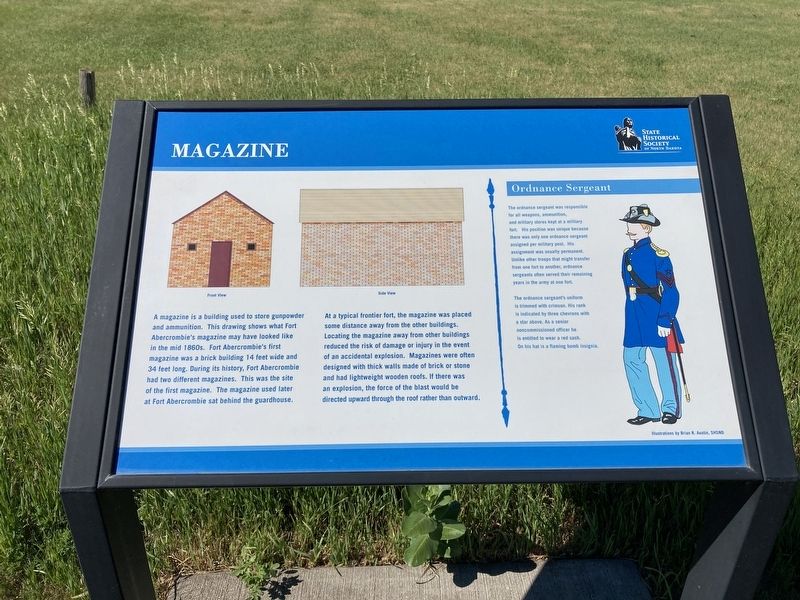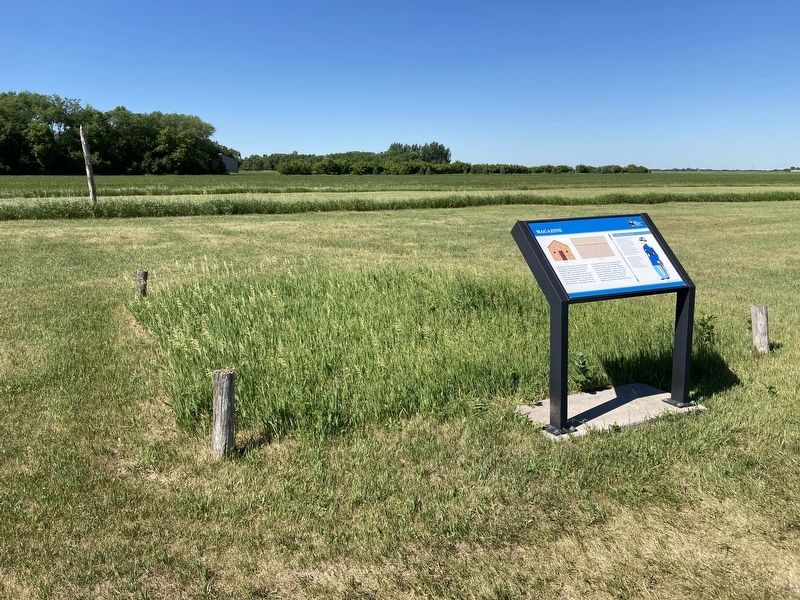Magazine
At a typical frontier fort, the magazine was placed some distance away from the other buildings. Locating the magazine away from other buildings reduced the risk of damage or injury in the event of an accidental explosion. Magazines were often designed with thick walls made of brick or stone and had lightweight wooden roofs. If there was an explosion, the force of the blast would be directed upward through the roof rather than outward.
Ordnance Sergeant
The ordnance sergeant was responsible
for all weapons, ammunition,
and military stores kept at a military
fort. His position was unique because
there was only one ordnance sergeant
assigned per military post. His
assignment was usually permanent.
Unlike other troops that might transfer
from one fort to another, ordnance
sergeants often served their remaining
years in the army at one fort.
The ordnance sergeant's uniform is
trimmed with crimson. His rank is indicated by three chevrons with a star above. As a senior noncommissioned officer he is entitled to wear a red sash. On his hat is a flaming bomb insignia.Erected by State Historical Society of North Dakota.
Topics. This historical marker is listed in these topic lists: Architecture • Forts and Castles.
Location. 46° 26.643′ N, 96° 43.145′ W. Marker is in Abercrombie, North Dakota, in Richland County. Marker is on Broadway North (County Highway 4) near Abercrombie Street, on the left when traveling north. Touch for map. Marker is at or near this postal address: 935 Broadway N, Abercrombie ND 58001, United States of America. Touch for directions.
Other nearby markers. At least 8 other markers are within walking distance of this marker. Surgeon’s & Chaplain’s Quarters (a few steps from this marker); Hospital (a few steps from this marker); Laundresses Quarters (within shouting distance of this marker); Sutler / Post Trader (within shouting distance of this marker); Fort Abercrombie (about 300 feet away, measured in a direct line); Headquarters (about 300 feet away); Guardhouse (about 400 feet away); Hospital / Lieutenant’s Quarters (about 500 feet away). Touch for a list and map of all markers in Abercrombie.
Credits. This page was last revised on July 6, 2021. It was originally submitted on July 6, 2021, by Connor Olson of Kewaskum, Wisconsin. This page has been viewed 74 times since then and 7 times this year. Photos: 1, 2. submitted on July 6, 2021, by Connor Olson of Kewaskum, Wisconsin. • Mark Hilton was the editor who published this page.

